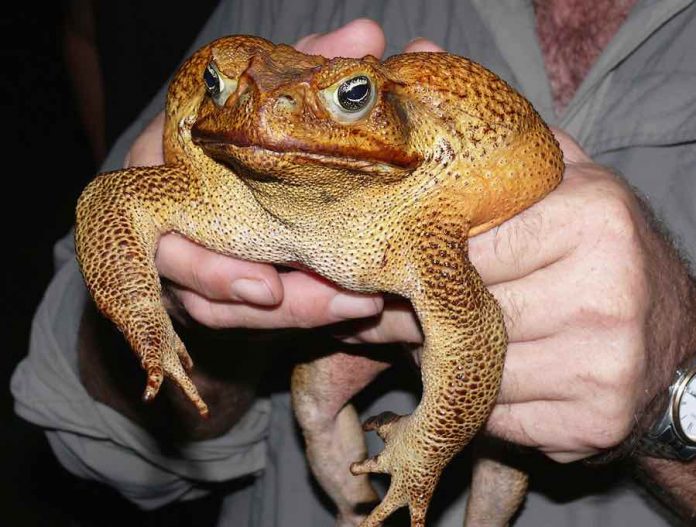Scientists have unlocked the DNA of the cane toad.
A genetic solution for the eradication of one of the world’s most destructive and, so far, uncontrollable introduced pests is one important step closer, following the successful sequencing of the genome of the cane toad (Rhinella marina).
In Australia, the giant, poisonous South American toad was introduced in 1935, intended as a biological control for a native beetle (Dermolepida albohirtum) that was laying waste to the sugar cane crops along the eastern seaboard of the far north of the continent.
Only a few dozen were let loose. Today, the population has grown to more than 200 million. The toads have spread further north and west, covering 1.2 million square kilometres, around a third of Australia’s land mass. They continue to push their frontier range by an estimated 40 to 60 kilometres a year.
In many ways, cane toads can be regarded not only as voracious predators, but also as super-competitors. They adapt to a wide range of habitats, prey on insects, lizards, marsupials and ground-nesting birds, and also reduce the amount of available food for other species.
Efforts to control cane toads have been many and varied, but largely unsuccessful. One recently developed method – that takes the continued ubiquity of the amphibians as a start point – is to use juveniles, or prepared “toad sausages”, to induce mild but unpleasant sickness in native animals, thus conditioning them to avoid the creatures in future.
Now, however, the possibility of a genetics-led solution to the problem is at hand. An international team of scientists led by Rich Edwards of the University of New South Wales (UNSW) in Australia has succeeded in unlocking more than 90% of the toad’s genome.
The achievement is detailed in a paper published in the journal GigaScience.
“Sequencing and assembling a genome is a complicated process,” explains Rich.
“By using the cutting-edge sequencing technology and expertise available at UNSW, we sequenced 360-odd billion base pairs and assembled one of the best quality amphibian genomes to date.
“We managed to decipher more than 90% of the cane toad genes using technology that can sequence very long pieces of DNA, which makes the task of putting together the genome jigsaw much easier.”
Studying the genome will offer insight into many aspects of the cane toad’s remarkable adaptive abilities, from how its poisons function, through to how it adjusts to varying environments.
The work dovetails nicely with another recent piece of research, published in the Journal of Virology, that identified ancient virus traces incorporated into cane toad DNA. The research, led by Alice Russo, from UNSW, also identified three types of more recent viral passenger in the toad – raising the very real prospect of creating a viral control.
“Up until we published this paper, only one family of viruses was known to affect the cane toad,” explains Russo.
“This is the first paper that has found different viruses, which is very promising. This paper has opened the door: we found a retrovirus, a picornavirus and a circovirus which are genetically similar to viruses infecting frogs, reptiles and fish. For two of them, we found a full genome – both could potentially be used as biocontrol agents.”
UNSW’s Rick Shine, the scientist who led the development of the “risk aversion” approach to protecting native animals, is extremely upbeat about the potential discoveries that can now be made using the latest research
“Future analysis of the genome will provide insights into cane toad evolution and enrich our understanding of their interplay with the ecosystem at large – it will help us understand how the toad spreads, how its toxin works, and provide new avenues to try to control its population,” he says.
“Very few amphibian genomes have been sequenced to date, so this is also great news for amphibians. Having a reference genome could provide valuable insights into how invasive species evolve to adapt to new environments.”















